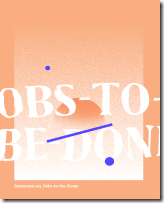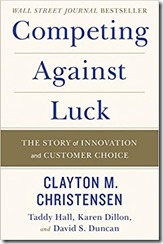Often, I summarize the To-Do Studio journey saying that it took us five years of research and development (R&D) to find a simple and elegant solution to the following problem: How to allow teammates to complete a common to-do list? The reality is much more complex.
What I describe as R&D is rather a long quest to find the right Product/Market Fit. Of everything I discovered applying the Lean Startup practices, Product/Market Fit is the concept that remains the most inspiring for me. Compared to some other concepts such as MVP that I first discovered through reading The Lean Startup, Product/Market Fit is much less famous outside of the startup scene.
Product/Market Fit means that the solution (the product) is well suited to its target problem (the market who experienced the problem). Startups that achieve Product/Market Fit create a sustainable future for their businesses, with products that can grow and generate profits long after the initial launch. The life of any startup can be divided into two parts — ’before’ Product/Market Fit and ‘after’ Product/Market Fit. Obviously, to this day, To-Do Studio is in the ‘before’ part. Our goal in 2019 is to move into the ‘after’ part.
Over the last five years, using ongoing build-measure-learn cycles, we have progressed toward validated learning. Every day we had new assumptions for building the product, new measures to check results, and new learning opportunities that brought us closer to Product/Market Fit.
On the other hand, on three occasions, we abandoned perseverance and opted instead for a pivot. Pivoting is what you should consider when you conclude that you’re not making any progress (or not enough) toward Product/Market Fit. A pivot is a radical course correction, going in a new direction, with a new strategic hypothesis regarding the problem or solution space. In pivot mode, the unit of progress is creative destruction.
Here is a summary that presents the radical course correction of each pivot:
A first interesting observation is the elapse of several years between each pivot. This can be explained by the following reasons:
- The discovery process requires time. Making the right assumptions and finding out why they are not working is hard and time consuming;
- For entrepreneurs, deciding to persevere against pitfalls is always the first choice. It takes a long period of thinking and many failures to agree to pivot;
- In bootstrapping mode, since entrepreneurs divide their efforts on two fronts, the discovery process is much longer. They must complete the contracts that finance the business while continuing to pursuit the Product/Market Fit.
A second interesting observation is that each pivot involves a creative destruction of the target market. It seems that entrepreneurs are poorly equipped to define the problem space. As a convergent thinker, an entrepreneur is much more likely to focus on the solution than the problem.
The good news is that correctly identifying a problem space is a knowledge that can be learned. In our case, it was in December 2017 when I discovered the “Job to be Done” innovation approach. This acquisition of new know-how led us to our most recent pivot.
“Job to be Done” innovation approach presents a product not as a set of functionality but rather as a solution that a customer hires to get a job done.
Here are two blog posts I wrote following my discovery of the approach. It describes the positive impact it has on our quest to discover a better Product/Market Fit:





